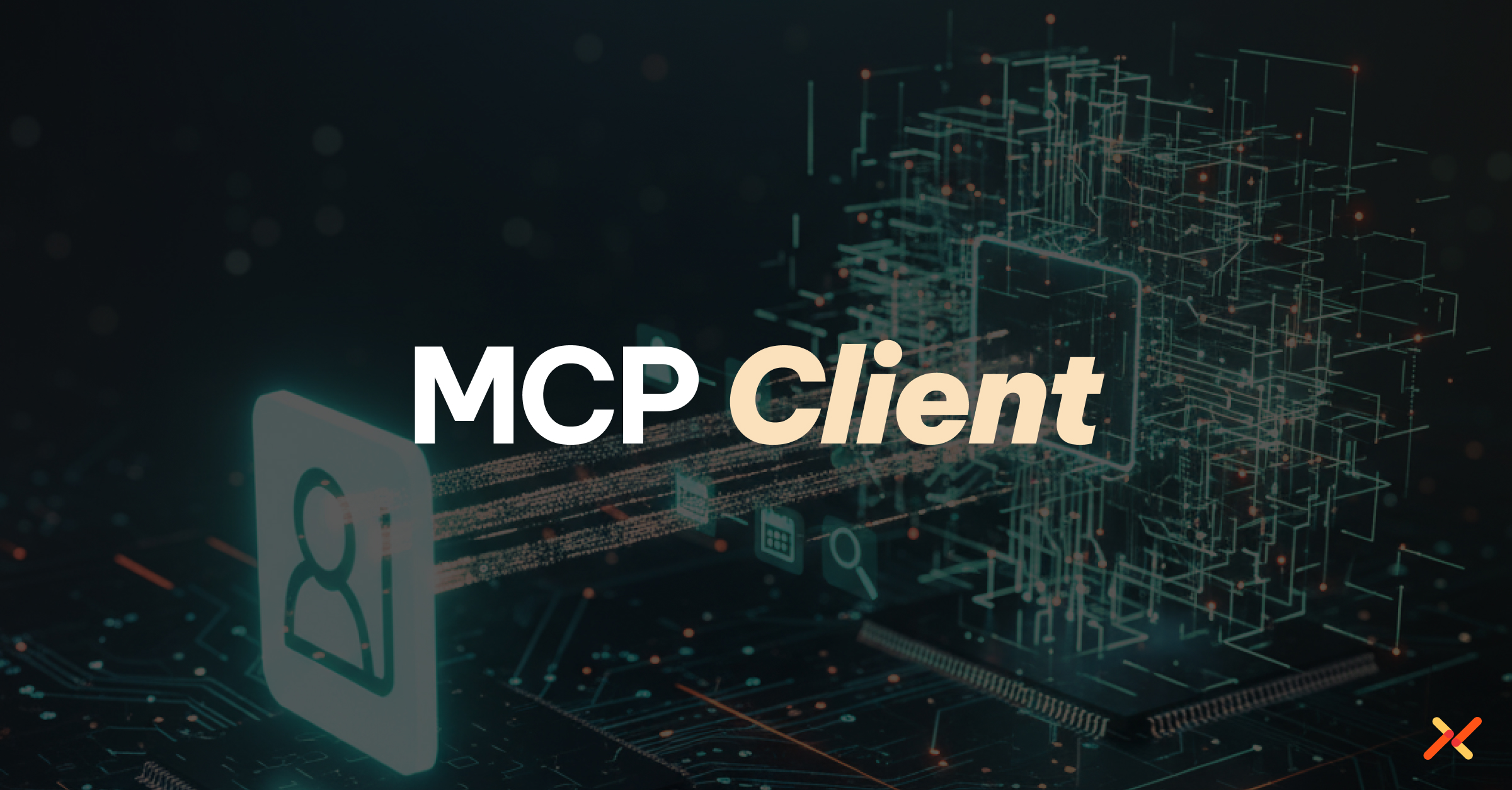An MCP Client is the software component or AI agent that connects to a Model Context Protocol (MCP) server to request tools, data, or context. It serves as the initiator in an MCP workflow, sending structured requests, receiving context, and invoking actions defined by MCP-compatible tools.
How It Manifests Technically
The MCP Client acts as the consumer in the Model Context Protocol ecosystem. In practice:
- The client (often an AI agent or LLM runtime) establishes a connection to an MCP server via secure channels such as HTTPS or WebSocket.
- It requests available capabilities or actions by querying the MCP server’s manifest.
- Once authorized, it sends contextual requests or tool invocations, for example, fetching a file, retrieving data, or executing an external API call.
- Each call may involve authentication to backend services on behalf of the agent.
- Clients are typically implemented in AI agent frameworks or orchestration layers that bridge model logic with enterprise APIs and infrastructure.
Why This Matters for Modern Enterprises
MCP Clients represent the entry point where AI systems begin interacting with enterprise data and tools. For enterprises adopting agentic AI:
- They allow secure, standardized communication between models and internal systems.
- They provide visibility and governance over which AI components are accessing which resources.
- They also mark a critical identity boundary, the point where an autonomous model becomes a participant in your enterprise access layer.
Without a secure, verified client, every MCP connection could expose sensitive APIs, files, or workflows to untrusted agents.
Common Challenges with MCP Clients
- Identity verification: Ensuring that each MCP Client (AI agent or workload) has a verifiable, attested identity before connecting to the server.
- Static credentials: Hardcoded API keys or tokens embedded in client code can be leaked or reused by unauthorized agents.
- Authorization drift: Different MCP servers may enforce inconsistent permissions, leading to overexposure of tools or data.
- Lack of observability: It can be difficult to trace which client performed which MCP actions without centralized logging.
- Cross-environment risk: When MCP Clients operate across multiple clouds or SaaS APIs, maintaining consistent trust relationships becomes complex.
How Aembit Helps
Aembit extends Workload Identity and Access Management (Workload IAM) to MCP Clients, securing every client-to-server interaction.
- It verifies the MCP Client’s identity using attestation from Trust Providers such as AWS, Kubernetes, or GitHub Actions before the client connects to the MCP server.
- It replaces static API keys with short-lived, scoped credentials or secretless authentication, ensuring that agents access only approved MCP servers and tools.
- Policy-driven access control governs which clients can call which MCP servers, tools, or APIs, under what environment and posture.
- Each request made through the client is logged with full identity and policy context, creating an auditable record of every MCP interaction.
- By unifying trust, credential issuance, and audit logging, Aembit provides a secure control plane for MCP Client authentication across hybrid and multi-cloud environments.
In short: Aembit makes MCP Clients verifiable, governable, and compliant, so every agent or model connecting to an MCP server does so under an authenticated, least-privilege identity.
Related Reading
FAQ
You Have Questions?
We Have Answers.
What distinguishes the MCP Client from the MCP Host or MCP Server?
The MCP Client is a component embedded within a host application (e.g., an AI-agent runtime or IDE) that manages a one-to-one connection to an MCP Server. In contrast, the MCP Host is the application context the user interacts with, and the MCP Server is the tool or data source provider.
What capabilities must a properly designed MCP Client support?
A compliant MCP Client should handle:
- Transport and session management (e.g., JSON-RPC over HTTP/SSE or STDIO)
- Capability discovery/negotiation (so it knows what the connected server supports)
- Tool invocation: sending requests to servers with the correct schema and handling responses.
- Security/authentication of the client’s identity so server can verify the request origin (while this is more of a broader concern, it’s increasingly framed as a needed function).
What are common implementation pitfalls with MCP Clients enterprises should watch for?
- Using hard-coded or static credentials in the client code rather than secure, scoped identity tokens, which leaves the client identity unverified.
- Failing to implement proper capability negotiation, causing the client to attempt unsupported or unsafe tool calls.
- Lack of centralized logging in client-server interactions, making it hard to trace which client instance did what.
- Clients running across heterogeneous environments (e.g., multi-cloud or hybrid) without consistent trust setups, leading to trust boundary gaps.
How should enterprises secure their MCP Clients as part of identity and access governance?
Enterprises should treat the MCP Client just like any non-human identity (workload identity):
- Ensure the client is attested and authenticated before any connection to an MCP Server is allowed (i.e., verify its runtime, origin, ownership).
- Issue short-lived, least-privilege credentials or use secretless authentication for the client, rather than embedding long-lived API keys.
- Apply policy at the client layer: define which clients are permitted to connect to which servers, under what posture or environmental context.
- Log every client-server interaction with the client identity, requested tool/resource, timestamp, and outcome to support full audit and traceability.

